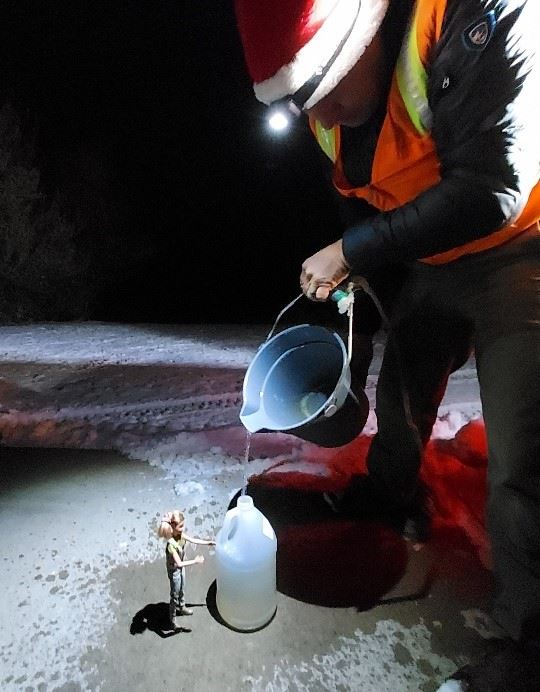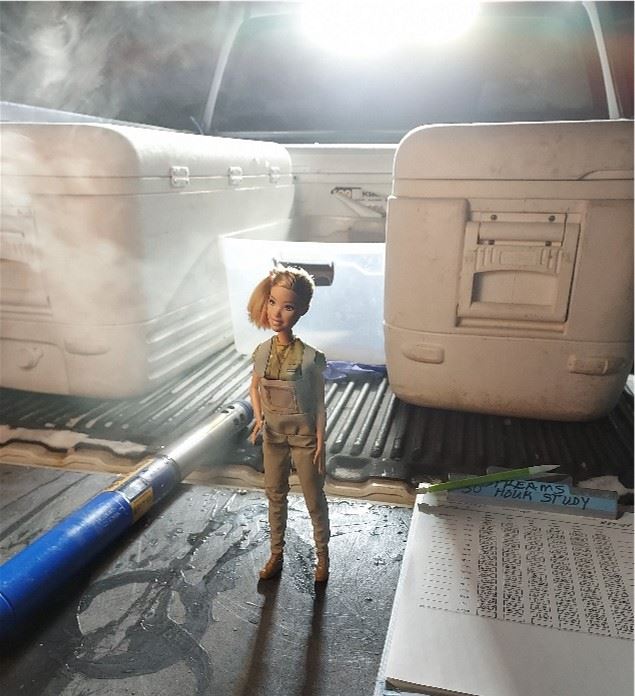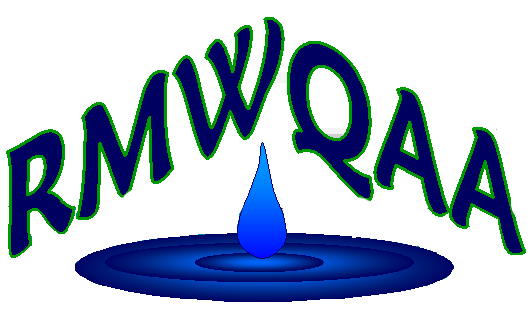 Hi! I’m South Platte Sally. You may remember me from the February 2021 and May 2022 RMWQAA blog posts. Sometimes you can see me sampling the river in the middle of the night, even in winter.
Hi! I’m South Platte Sally. You may remember me from the February 2021 and May 2022 RMWQAA blog posts. Sometimes you can see me sampling the river in the middle of the night, even in winter.
You might be wondering why I’m out there. Well…I’m a volunteer helping Metro Water Recovery’s Water Quality Team. Recently, I helped with the overnight shift collecting water samples for a 30-Hour Study. The data from this study is used to calibrate and refine the South Platte Water Quality Model (the model) that was developed for Metro Water Recovery nearly three decades ago. The combination of monitoring and modeling over Segments 15 and 1a of the South Platte River provides a detailed functional view of water quality below wastewater discharge points.
Initially, water quality scientists and regulators used the model to learn how upstream discharge might be contributing to low dissolved oxygen levels measured downstream. After that, the goal was to understand the factors affecting the water quality to make environmentally and financially responsible decisions to improve water quality. The model helps predict the return on investment of any treatment upgrades in terms of river health. It supports and helps evaluate proposed regulatory changes including permit requirements. The model has evolved over time to become a very useful tool for predicting the results of treatment changes for multiple parameters including ammonia, temperature, phosphorus and nitrogen.
There is a high degree of interaction between the parameters of interest in a river system. Ammonia is toxic to aquatic life, and its degree of toxicity is dependent on pH and temperature. Therefore, changes in pH and temperature downstream, as well as changes in concentration of ammonia downstream, cause progressive change in the numeric standard for ammonia. Temperature has only more recently become subject to numeric standards and being included into most discharge permits. Temperature standards are based on daily maxima and weekly averages, and are intended to prevent dischargers from adding heat to the mixed flow below their discharges in an amount that would cause the mixed flow temperatures to exceed aquatic life standards. Nutrients are important because they contribute to algae growth that effects pH values in downstream reservoirs.
With so many intertwined parameters, the creation and sustainability of the model requires quite a lot of data to capture the impact of river health. Data collection includes regular water quality sampling of the 42-mile stretch of the river plus groundwater data, flow data from various sites up and downstream of tributaries, and other dischargers.
So why does the model need calibration and why collect at night? Every 5 years or so, the model needs to be calibrated. This requires continuous sampling for a 30 hour period of time for dissolved oxygen, pH, and nutrient concentrations. All of these relationships have different process rates related to flow and temperature and are most pronounced during low flow conditions. Capturing the overnight changes helps with a more accurate calibration of the model. So, Sally and the team put on their headlamps and take shifts.
Besides predicting dissolved oxygen downstream of wastewater effluent discharge, the model has been applied to several small projects, including development and evaluation of site-specific copper standards and evaluations of water diversions at the Burlington Ditch on downstream water quality.
model has been applied to several small projects, including development and evaluation of site-specific copper standards and evaluations of water diversions at the Burlington Ditch on downstream water quality.
Cross-sectional variation in river temperatures was also modeled and led to recommendations for temperature monitoring strategies. The model is an evolving tool that has proven to be valuable in estimation of biological processes affecting dissolved oxygen, nitrate, ammonia, and total inorganic nitrogen.
Learn more about this study in the Rationale for and Explanation of Metro District’s Water Quality Modeling of the South Platte River, prepared by William M. Lewis, Jr. James H. McCutchan, Jr. January 24, 2019. This report describes recalibration of the model leading to new estimates of effluent limits for dissolved oxygen, nitrogen species, and total phosphorus.
And, as always, please reach out to me if you need a volunteer to help with any of your water quality projects!
-SP Sal
South Platte Sally is an experienced scientist who has worked all over the world. Sally holds degrees in Fisheries Science, Biology, City Planning, and Psychology. She currently volunteers for various Water and Wastewater entities in Colorado and always willing to help out.
 Welcome to the
RMWQAA Website!
Welcome to the
RMWQAA Website!  Welcome to the
RMWQAA Website!
Welcome to the
RMWQAA Website!